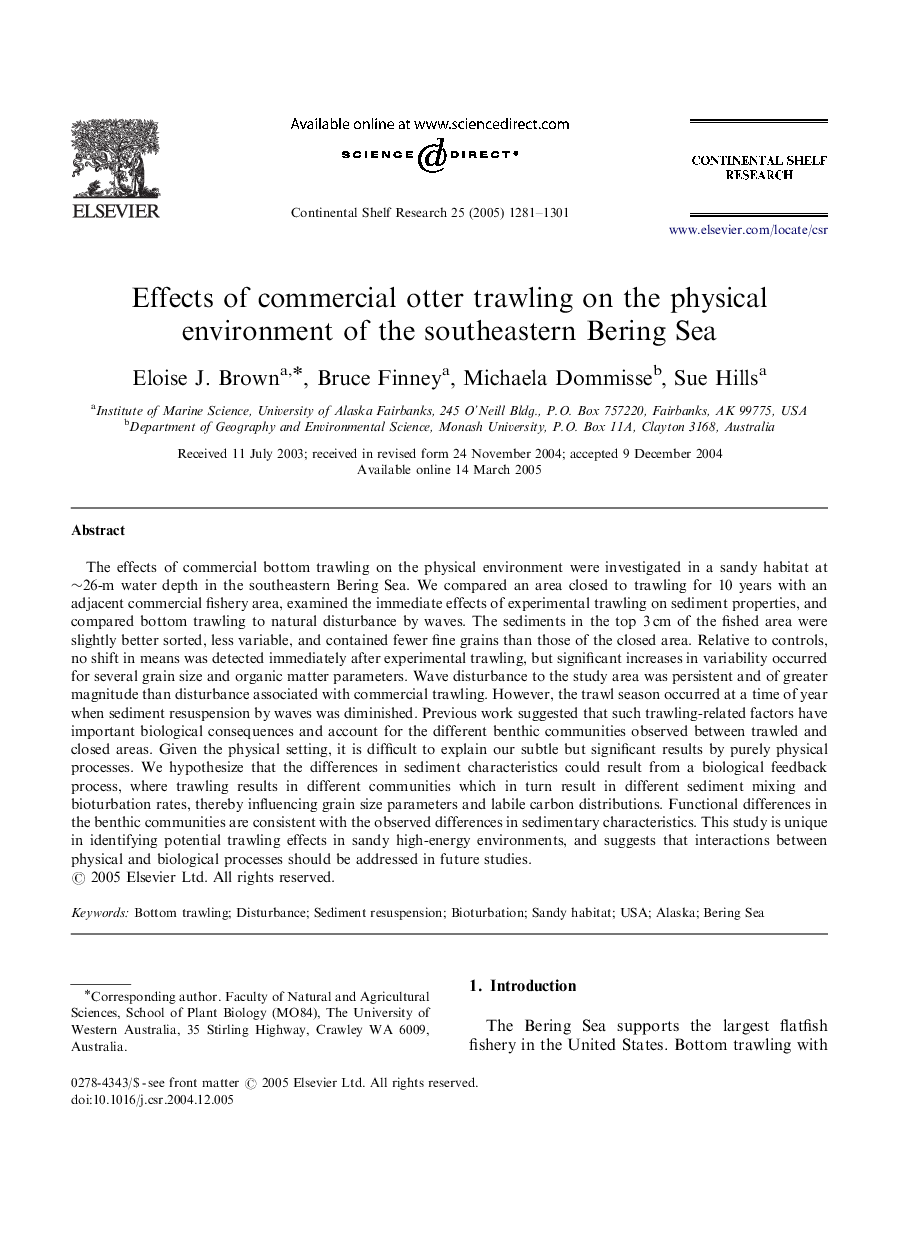| Article ID | Journal | Published Year | Pages | File Type |
|---|---|---|---|---|
| 9479129 | Continental Shelf Research | 2005 | 21 Pages |
Abstract
The effects of commercial bottom trawling on the physical environment were investigated in a sandy habitat at â¼26-m water depth in the southeastern Bering Sea. We compared an area closed to trawling for 10 years with an adjacent commercial fishery area, examined the immediate effects of experimental trawling on sediment properties, and compared bottom trawling to natural disturbance by waves. The sediments in the top 3Â cm of the fished area were slightly better sorted, less variable, and contained fewer fine grains than those of the closed area. Relative to controls, no shift in means was detected immediately after experimental trawling, but significant increases in variability occurred for several grain size and organic matter parameters. Wave disturbance to the study area was persistent and of greater magnitude than disturbance associated with commercial trawling. However, the trawl season occurred at a time of year when sediment resuspension by waves was diminished. Previous work suggested that such trawling-related factors have important biological consequences and account for the different benthic communities observed between trawled and closed areas. Given the physical setting, it is difficult to explain our subtle but significant results by purely physical processes. We hypothesize that the differences in sediment characteristics could result from a biological feedback process, where trawling results in different communities which in turn result in different sediment mixing and bioturbation rates, thereby influencing grain size parameters and labile carbon distributions. Functional differences in the benthic communities are consistent with the observed differences in sedimentary characteristics. This study is unique in identifying potential trawling effects in sandy high-energy environments, and suggests that interactions between physical and biological processes should be addressed in future studies.
Related Topics
Physical Sciences and Engineering
Earth and Planetary Sciences
Geology
Authors
Eloise J. Brown, Bruce Finney, Michaela Dommisse, Sue Hills,
